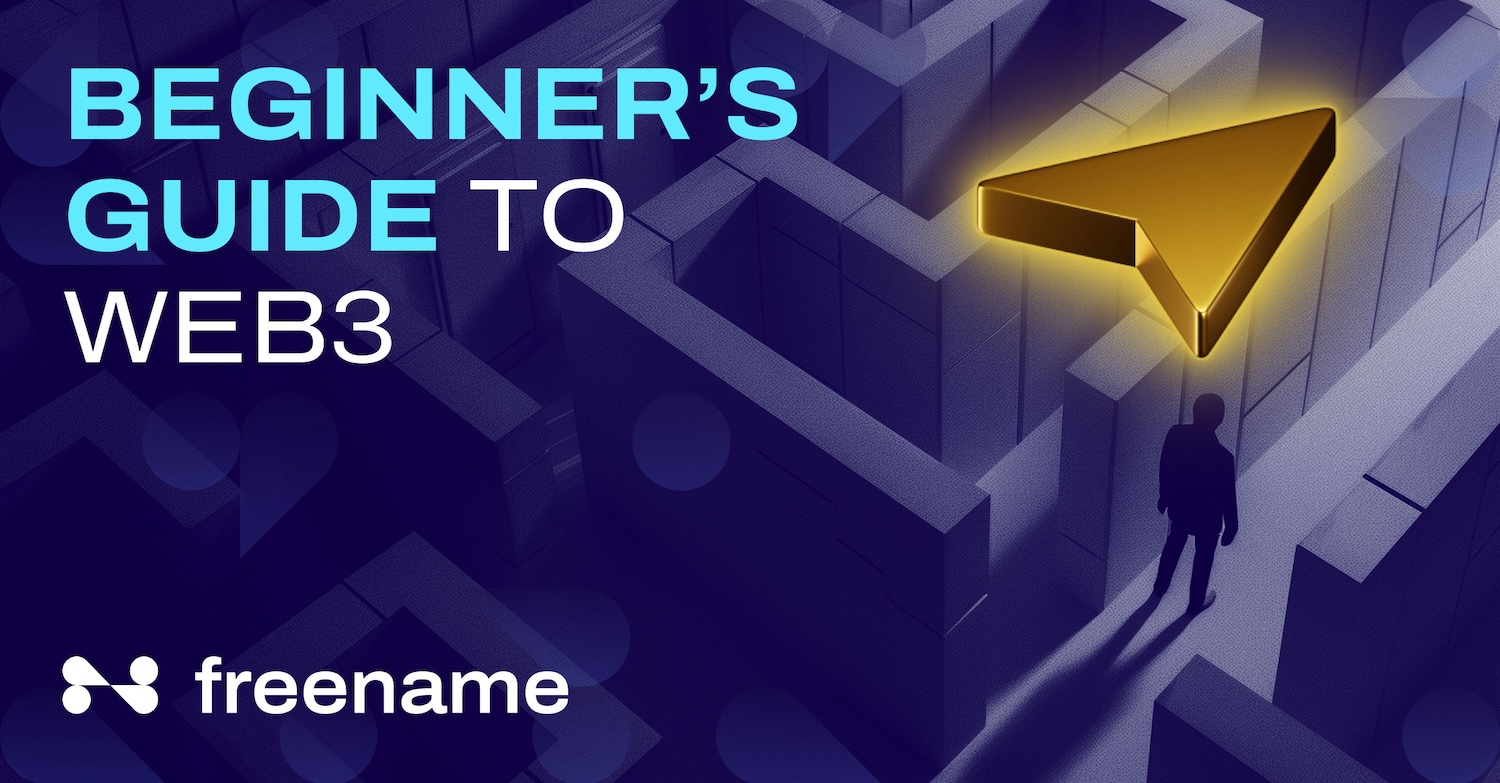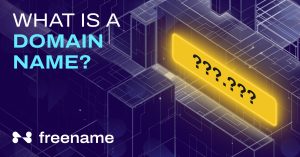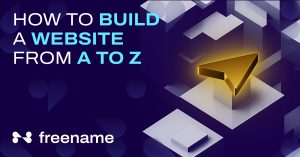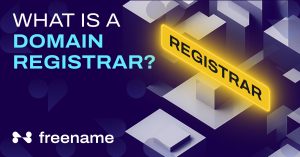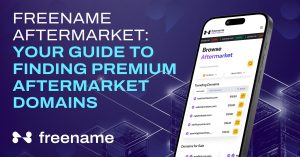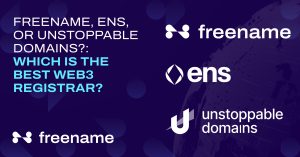The terms “blockchain,” “cryptocurrency,” and “NFTs” are becoming commonplace as Web3 gains traction. Web3 is the next evolution of the internet, promising to transform how we interact online by providing more decentralization, security, and user control.
This guide is designed to help beginners understand Web3 and get started with this revolutionary technology.
What is Web3?
Web3 represents the latest stage in the internet’s development. It builds on the foundations of Web1 and Web2, emphasizing decentralization and giving users more control over their data and digital interactions. By leveraging blockchain technology, Web3 aims to create a more secure and transparent online experience, shifting the power dynamics from centralized entities to individual users. This shift is akin to moving from a company-owned apartment to owning your own home—users have more autonomy and ownership of their digital lives.
The Evolution of the Web
Web1: The Read-Only Web
Web1, which spanned from the 1990s to the early 2000s, was the internet’s initial phase. It was characterized by static websites where users could only consume content. These websites were similar to digital brochures, offering information without allowing for user interaction or content creation. During this era, the internet was a vast, information-rich resource, but it was a one-way street. Users could read and gather information, but they couldn’t contribute to the content or interact with it. The experience was passive, similar to reading a newspaper or a book.
Web2: The Interactive Web
Web2 marked a significant transformation in how we interact online. This phase introduced interactivity and social engagement, allowing users to create and share content. Platforms like Facebook, YouTube, and Twitter became popular, giving rise to social media and user-generated content. Users could now comment, share, and collaborate, turning the internet into a dynamic, interactive space. However, this era also saw the centralization of data by tech giants, raising concerns about privacy, data ownership, and the monopolization of the internet by a few large companies. These platforms held vast amounts of user data, leading to privacy issues and the concentration of power in a handful of corporations, which controlled the flow and monetization of information.
Web3: The Read-Write-Own Web
Web3 addresses the centralization issues of Web2 by using blockchain technology to create a decentralized internet. This new phase is defined by several key features:
- Blockchain: A secure, transparent ledger of transactions maintained across a network of computers, ensuring data integrity and security. Blockchain can be thought of as a public, digital ledger that is immutable and transparent, making it highly secure.
- Cryptocurrencies: Digital currencies like Bitcoin used for transactions and incentivizing network participation, providing financial autonomy to users. These currencies operate independently of traditional financial systems, offering a new way to store and transfer value.
- Smart Contracts: Self-executing contracts with terms directly written into code, automating and securing agreements without the need for intermediaries. These contracts execute automatically when predefined conditions are met, reducing the need for middlemen and increasing efficiency.
- Decentralized Applications (dApps): Applications running on blockchain networks without centralized control, promoting user autonomy and innovation. dApps operate transparently and without a single point of failure, unlike traditional apps controlled by central authorities.
- NFTs (Non-Fungible Tokens): Unique digital assets representing ownership of items like art, music, and property, enabling new forms of digital ownership and commerce. Each NFT is unique and can be used to verify authenticity and ownership of digital and physical items.
Benefits of Web3
Decentralization
Web3 reduces the risk of censorship and improves security by eliminating single points of control. This decentralization ensures that no single entity has control over the entire network, enhancing data integrity and resilience against attacks. For instance, in a decentralized system, it is much harder for hackers to compromise the entire network because they would need to control a majority of the network’s nodes, which is often infeasible.
User Empowerment
Web3 gives users control over their data and digital assets. Instead of relying on centralized platforms, individuals can manage their online interactions and transactions directly, ensuring greater privacy and autonomy. This empowerment is comparable to owning your own safe instead of storing valuables in a bank—users have direct access and control over their assets without third-party interference.
Innovation
Web3 encourages new business models and applications. By removing intermediaries and enabling direct peer-to-peer interactions, Web3 fosters an environment ripe for innovation and the development of novel technologies and services. Startups and developers can create decentralized apps that offer services previously dominated by big tech companies, leading to a more diverse and competitive internet landscape, also paving the way for more revenues for people involved with Web3.
Key Components of Web3
1. Blockchain Technology
- What is Blockchain? A distributed ledger maintained by a network of computers that records transactions securely and transparently. Each block contains a list of transactions, and once added, it cannot be altered, ensuring the integrity and permanence of the data. This technology provides a tamper-proof record of transactions, which is crucial for trustless systems.
- Types of Blockchains: Major blockchains include Bitcoin and Ethereum, with many others emerging to serve various use cases. Bitcoin is primarily used for digital currency transactions, while Ethereum supports a wide range of applications through its smart contract capabilities.
- Layer 1 and Layer 2: Layer 1 blockchains are foundational, providing the base infrastructure for transactions. Layer 2 solutions build on top of Layer 1 to improve scalability and efficiency, addressing issues like transaction speed and costs. Layer 2 solutions, such as the Lightning Network for Bitcoin, enable faster and cheaper transactions by processing them off-chain and settling them on the main blockchain.
2. Cryptocurrencies
- What is Cryptocurrency? Digital currencies used for transactions on blockchain networks. They provide a decentralized and secure means of transferring value, free from traditional banking systems. Cryptocurrencies operate on cryptographic principles, ensuring secure transactions and the creation of new units through processes like mining or staking.
- Bitcoin vs. Ethereum: Bitcoin is often considered digital gold due to its store of value properties. Ethereum, on the other hand, supports decentralized applications and smart contracts, offering more versatility beyond digital currency. Ethereum’s programmable blockchain allows developers to build various applications, from games to financial services.
- Crypto Tokens: Tokens represent assets and utilities within specific platforms. They can be used for various purposes, including governance, access to services, and representing ownership of real-world assets. For example, utility tokens grant access to a service, while security tokens represent investment in a project.
3. Decentralized Finance (DeFi)
- What is DeFi? Financial services on blockchain that eliminate intermediaries like banks. DeFi applications offer traditional financial services such as lending, borrowing, and trading in a decentralized manner. By using smart contracts, DeFi platforms enable financial transactions that are transparent, secure, and efficient.
- Liquidity Pooling: Users contribute funds to pools, earning rewards while facilitating transactions. This system ensures liquidity for DeFi platforms, enabling efficient and decentralized financial operations. Participants earn fees from the trades that occur in the liquidity pools, providing an incentive to contribute.
4. NFTs
- What are NFTs? Unique digital assets representing ownership of items like art, music, and property. NFTs are stored on the blockchain, ensuring their authenticity and scarcity. Each NFT has distinct information that makes it different from any other NFT, which is why they are called non-fungible.
- Use Cases: NFTs can be used in various industries, including supply chains, luxury goods, medical records, and real estate. They provide a transparent and verifiable way to represent ownership and provenance. For example, an artist can sell their digital art as NFTs, ensuring they receive royalties on future resales.
5. Play-to-Earn Gaming
- What is Play-to-Earn? Games that reward players with cryptocurrency or NFTs. This model allows gamers to earn real-world value through their in-game activities. Unlike traditional games where the rewards are confined within the game, play-to-earn games provide tangible benefits that can be traded or sold in the real world.
- Examples: Games like Axie Infinity allow players to earn and trade in-game assets, creating a new economy within the gaming industry. Players can breed, battle, and trade digital pets called Axies, which are NFTs, making their gaming efforts financially rewarding.
Getting Started with Web3
To get started with Web3, follow these essential steps and start experimenting.
1. Set Up a Digital Wallet
To begin your Web3 journey, you need a digital wallet. Choose a reputable wallet such as MetaMask, which allows you to store and manage your cryptocurrencies and NFTs. Ensure you secure your wallet with a seed phrase, a critical component that protects your assets from unauthorized access. The seed phrase is a series of words that acts as a backup and recovery tool for your wallet. Losing it could mean losing access to your assets permanently.
2. Buy and Use Cryptocurrencies
Purchase cryptocurrencies on exchanges like Coinbase. Once you have acquired digital currencies, use them to interact with dApps and explore their functionalities. This process involves sending and receiving funds, participating in decentralized finance platforms, and engaging with the broader Web3 ecosystem. Using cryptocurrencies can initially seem daunting, but many platforms offer user-friendly interfaces and detailed guides to help beginners.
3. Buy a Web3 Domain
Purchasing a Web3 domain is a great way to deepen your understanding of the decentralized internet. Web3 domains, offered by providers like Freename, allow you to create a human-readable address for your digital identity. This process involves searching for an available domain, purchasing it using cryptocurrency, and configuring it to link with your wallet and other services. By owning a Web3 domain, you gain practical experience in interacting with blockchain technology and decentralized systems, providing a tangible entry point into the world of Web3.
3. Explore dApps and Smart Contracts
Visit platforms like OpenSea for NFTs or Uniswap for DeFi services. These platforms showcase the diverse applications of blockchain technology, from digital art marketplaces to decentralized trading protocols. Learning how smart contracts automate transactions and enforce agreements will deepen your understanding of Web3’s potential. For example, on Uniswap, users can swap tokens directly from their wallets without the need for a central authority, while OpenSea allows users to buy, sell, and trade NFTs in a decentralized manner.
4. Find Your Tribe
Engage with Web3 communities on platforms like Discord and Telegram (Freename’s Telegram is one of the most active communities). These communities offer support, information, and networking opportunities, helping you stay informed and connected with like-minded individuals. Participating in discussions and events will enhance your knowledge and involvement in the Web3 space. Joining these communities can provide insights into new projects, upcoming trends, and potential investment opportunities, making your Web3 journey more enriching and engaging.
The Future Of Web3 And Its Adopters Is Bright
Web3 has the potential to transform industries like finance, healthcare, and gaming, just to name a few. As technology evolves, expect more user-friendly interfaces and broader adoption. Innovations in blockchain scalability, interoperability, and user experience will drive mainstream acceptance; consideration about the ethical impact and sustainability of Web3 will drive the conversation. Staying updated with Web3 news and participating in communities will help you understand and navigate this new landscape and seize emerging opportunities. The future of Web3 may also see increased regulatory clarity, which could further encourage adoption by providing a safer environment for users and investors.
Learn Web3 For Beginners: FAQs
How To Learn Web3 As A Beginner?
Learning Web3 can seem daunting at first, but with the right approach and resources, beginners can quickly gain a solid understanding. Start by familiarizing yourself with the basic concepts and terminology. Resources such as online courses, tutorials, and articles can provide foundational knowledge. Websites like Coursera, Udemy, and edX offer courses specifically focused on blockchain, cryptocurrencies, and Web3 technologies.
Reading books and following industry blogs are also beneficial. Books like “Mastering Bitcoin” by Andreas M. Antonopoulos and “Blockchain Basics” by Daniel Drescher provide in-depth insights into blockchain technology and its applications. Additionally, following resources like the Freename blog and official blogs of blockchain platforms like Bitcoin can keep you updated on the latest developments.
Joining Web3 communities on platforms like Discord, Telegram, and Reddit can provide valuable support and networking opportunities. These communities often share resources, answer questions, and discuss the latest trends in Web3. Participating in online forums and attending webinars or conferences can further enhance your learning experience.
Hands-on practice is crucial for understanding Web3. Start by setting up a digital wallet and experimenting with cryptocurrencies. Engage with decentralized applications (dApps) and explore different blockchain networks. Buy a Web3 domain and start using it to gain practical experience.
How Do I Start Working on Web3?
Starting a career in Web3 requires education, networking, and practical experience. Begin by gaining a thorough understanding of blockchain technology, cryptocurrencies, and decentralized applications. Online courses, certifications, and self-study can help you build this foundational knowledge.
Next, identify the area of Web3 that interests you the most. Whether it’s developing smart contracts, creating dApps, working in decentralized finance (DeFi), or exploring non-fungible tokens (NFTs), having a clear focus can help you tailor your learning and skill development.
Building a portfolio of projects is essential. Start with small projects, such as writing basic smart contracts or creating simple dApps. GitHub is a great platform to showcase your work and collaborate with others. Participate in hackathons and contribute to open-source projects to gain practical experience and visibility in the Web3 community.
Networking is also vital. Join Web3 and blockchain communities on platforms like LinkedIn, Discord, and Twitter. Attend industry conferences, meetups, and webinars to connect with professionals and potential employers. Engaging with the community can provide job leads, mentorship, and collaboration opportunities.
Can I Learn Web3 Without Coding?
Yes, it is possible to learn Web3 without coding, especially if you are more interested in the conceptual and business aspects of the technology. While coding skills can enhance your understanding and open up more opportunities, there are numerous roles within the Web3 ecosystem that do not require programming.
For instance, roles in project management, marketing, community management, content creation, and business development are crucial for the growth and adoption of Web3 technologies. Understanding the fundamentals of blockchain, cryptocurrencies, and decentralized applications will be beneficial, even if you don’t code.
To start, focus on gaining a strong theoretical understanding of Web3. Take courses that cover the basics of blockchain technology, cryptocurrency markets, and the principles of decentralization. Reading books, articles, and whitepapers, such as the Bitcoin whitepaper by Satoshi Nakamoto, can provide deep insights.
Engage with the community through forums, social media, and events to learn from industry experts and stay updated on the latest trends. Participate in discussions, ask questions, and share your knowledge to build a network and enhance your understanding.
Additionally, tools and platforms like MetaMask, OpenSea, and Uniswap can be explored without coding skills. Understanding how these applications work from a user perspective can provide valuable insights into the Web3 ecosystem.
How Long Does It Take to Learn Web3?
The time it takes to learn Web3 depends on your background, the depth of knowledge you seek, and the amount of time you can dedicate to learning. For a complete beginner, it might take several months to gain a good understanding of the basics. If you already have some knowledge of blockchain and cryptocurrencies, the learning curve might be shorter.
To gain a foundational understanding, including basic concepts, terminology, and the ability to interact with blockchain technology and decentralized applications, it may take 3-6 months of consistent study and practice. This timeline includes completing online courses, reading relevant materials, and experimenting with hands-on projects.
For more advanced skills, such as developing smart contracts, creating complex dApps, or understanding the intricacies of decentralized finance (DeFi) and non-fungible tokens (NFTs), it can take 6-12 months or more. This timeframe involves deeper learning, building and deploying projects, and possibly gaining certifications.
The Web3 space is rapidly evolving, so continuous learning is essential. Staying updated with the latest trends, tools, and technologies will help you keep pace with the advancements in the field. Engaging with the community, participating in hackathons, and contributing to open-source projects can also accelerate your learning process and provide practical experience.
Can Buying a Web3 Domain Be a Good Way to Learn Web3?
Yes, buying a Web3 domain can be an excellent way to learn about Web3. Here’s why:
1. Hands-On Experience
Purchasing a Web3 domain involves setting up a digital wallet, using cryptocurrency, and interacting with blockchain technology. This process provides practical, hands-on experience with key Web3 concepts and tools.
2. Understanding Blockchain and Decentralization
Web3 domains are built on blockchain technology. By buying and using a Web3 domain, you gain a better understanding of how decentralized systems work, including the concepts of distributed ledgers, smart contracts, and decentralized applications (dApps).
3. Simplifying Cryptocurrency Transactions
Web3 domains simplify cryptocurrency transactions by providing a human-readable address instead of long, complex wallet addresses. This makes sending and receiving cryptocurrencies easier and helps you understand the practical benefits of blockchain technology.
4. Exploring Decentralized Websites
With a Web3 domain, you can host a decentralized website on platforms like the InterPlanetary File System (IPFS). This gives you insight into how decentralized hosting works and the advantages it offers over traditional, centralized hosting solutions.
5. Engaging with the Web3 Community
Owning a Web3 domain often involves engaging with the broader Web3 community. This can provide valuable learning opportunities, support, and networking with other enthusiasts and professionals in the space.
Overall, buying a Web3 domain is a practical and engaging way to start your Web3 journey, offering a tangible way to interact with and understand the decentralized internet.

